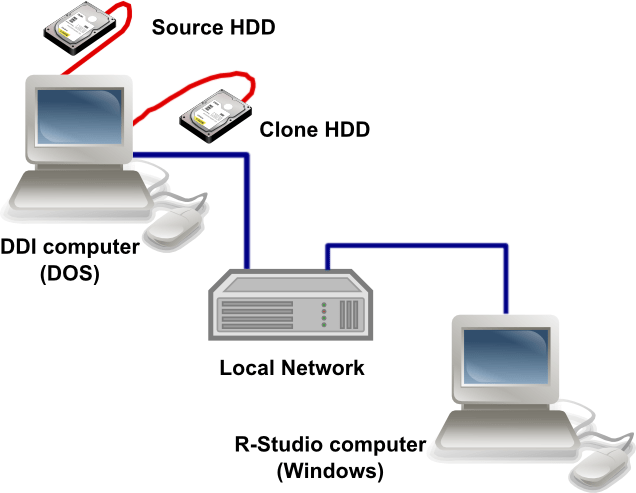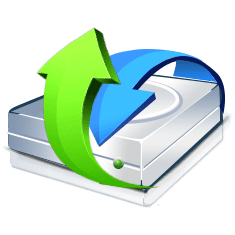
- for Windows
The IT industry has an increasing demand for professional data recovery equipment that can recover failed drives, that is, drives that cannot be recovered by means of data recovery software. Many of these drives have disk read-instability issues, such as numerous bad sectors, occasional non-responsive states, and extremely slow command processing times. These drives can be recovered by professional data recovery disk imaging equipment without the need for replacement of mechanical or electronic parts. Drives with such issues usually cause the system software (BIOS/OS) to stop responding or even to not recognize the drive at all. Because the problem is at the BIOS/OS level, its solution requires an investment into dedicated hardware.
R-Studio now provides features at the hardware level of hard disk drives, based on its integration with the DeepSpar Disk Imager (DDI). This integration allows for the following:
-
Advantages for R-Studio users
- Low level hardware solution bypassing the computer BIOS
- Disable specific drive read/write heads
- Disable SMART subsystem, Bad Sector Reallocation, and Read Look-Ahead
- Read sector timeout controlled by Software/Hardware/PHY drive reset commands
- Bit level analysis of corrupted data to filter out the read-write channel noise
- Fully customizable multi-pass imaging
-
Advantages for DDI users
- Wider range of supported file systems and their different variants
- File based imaging directly from RAID arrays
- Extensive raw file recovery capabilities
- Improved algorithms for file system recovery
- User friendly interface of R-Studio
- Extended reporting functionality
The next step up from software recoveries has always been data recovery disk imaging equipment. Why? Here is a list of recovery procedures and tools involved in professional data recovery processes, prioritized by return-on-investment (based on initial and operational time/costs/risks):
-
Logical Recovery Software:Low initial cost and minimal knowledge required because the software automates most tasks.
-
Data Recovery Imaging:Moderate initial cost and low knowledge required to perform disk imaging operations. No operational costs.
-
Hard Disk Drive Board Swap(also moving an external ROM chip from a failed board to a donor): No initial costs, but high operational time/costs/risks and expertise required to find a compatible donor.
-
Firmware Repair(Drive System Area & ROM): Much higher initial cost of equipment and expertise, as compared to disk imaging.
-
Heads/Platters TransplantVery high operational time/costs/risks and expertise.
This new integration allows our users to easily add data recovery imaging capabilities to their processes. The result is the user-friendly environment of R-Studio using its advanced algorithms to go after your files with the powerful DeepSpar Disk Imager hardware working to handle drive instabilities on-the-fly underneath it all.
The DeepSpar Disk Imager PCIe board should be installed into a separate network computer (the DDI computer) that has the source and clone drives connected to it. The DDI computer should be started using the boot USB stick supplied with the board. R-Studio running on another computer (the R-Studio computer) accesses the disk via a Local Area Network. So, all data recovery operations are being done through the following setup:

Such integration allows imaging to be performed on a file-by-file basis avoiding necessity to image the entire source drive prior to analyzing and repairing the structure of the file system. In other words, whenever R-Studio needs to analyze a particular element of the file system, such as MBR, a boot sector or an MFT record, sectors that belong to those elements are being retrieved by the DDI from the source drive, copied to the clone drive and then returned to R-Studio over the network.
DDI disks appear in the Drives pane of R-Studio as regular disk objects and can be processed as such. For example, they can be included into RAID objects.
Moreover, R-Studio can read and process images and disk maps created by standalone DDI hardware.
- Data Recovery Guide
- Why R-Studio?
- R-Studio for Forensic and Data Recovery Business
- R-STUDIO Review on TopTenReviews
- File Recovery Specifics for SSD devices
- How to recover data from NVMe devices
- Predicting Success of Common Data Recovery Cases
- Recovery of Overwritten Data
- Emergency File Recovery Using R-Studio Emergency
- RAID Recovery Presentation
- R-Studio: Data recovery from a non-functional computer
- File Recovery from a Computer that Won't Boot
- Clone Disks Before File Recovery
- HD Video Recovery from SD cards
- File Recovery from an Unbootable Mac Computer
- The best way to recover files from a Mac system disk
- Data Recovery from an Encrypted Linux Disk after a System Crash
- Data Recovery from Apple Disk Images (.DMG files)
- File Recovery after Re-installing Windows
- R-Studio: Data Recovery over Network
- How To Use R-Studio Corporate Package
- Data Recovery from a Re-Formatted NTFS Disk
- Data Recovery from an ReFS disk
- Data Recovery from a Re-Formatted exFAT/FAT Disk
- Data Recovery from an Erased HFS Disk
- Data Recovery from an Erased APFS Disk
- Data Recovery from a Re-Formatted Ext2/3/4FS Disk
- Data Recovery from an XFS Disk
- Data Recovery from a Simple NAS
- How to connect virtual RAID and LVM/LDM volumes to the operating system
- Specifics of File Recovery After a Quick Format
- Data Recovery After Partition Manager Crash
- File Recovery vs. File Repair
- Data Recovery from Virtual Machines
- Emergency Data Recovery over Network
- Data Recovery over the Internet
- Creating a Custom Known File Type for R-Studio
- Finding RAID parameters
- Recovering Partitions on a Damaged Disk
- NAT and Firewall Traversal for Remote Data Recovery
- Data Recovery from an External Disk with a Damaged File System
- File Recovery Basics
- Default Parameters of Software Stripe Sets (RAID 0) in Mac OS X
- Data Recovery from Virtual Hard Disk (VHD/VHDX) Files
- Data Recovery from Various File Container Formats and Encrypted Disks
- Automatic RAID Parameter Detection
- IntelligentScan Data Recovery Technology
- Multi-pass imaging in R-Studio
- Runtime Imaging in R-Studio
- Linear Imaging vs Runtime Imaging vs Multi-Pass Imaging
- USB Stabilizer Tech for unstable USB devices
- Joint work of R-Studio and PC-3000 UDMA hardware
- Joint work of R-Studio and HDDSuperClone
- R-Studio T80+ - A Professional Data Recovery and Forensic Solution for Small Business and Individuals Just for 1 USD/day
- Backup Articles
- R-Drive Image Standalone and Corporate license transferring
- Backup with Confidence
- R-Drive Image as a free powerful partition manager
- Computer Recovery and System Restore
- Disk Cloning and Mass System Deployment
- Accessing Individual Files or Folders on a Backed Up Disk Image
- Creating a Data Consistent, Space Efficient Data Backup Plan for a Small Business Server
- How to Move the Already Installed Windows from an Old HDD to a New SSD Device and Create a Hybrid Data Storage System
- How to Move an Installed Windows to a Larger Disk
- How to Move a BitLocker-Encrypted System Disk to a New Storage Device
- How to backup and restore disks on Linux and Mac computers using R-Drive Image
- Undelete Articles
- Get Deleted Files Back
- Free Recovery from SD and Memory cards
- R-Undelete: Video Recovery
- Recovery from an External Device with a Damaged File System
- File recovery from a non-functional computer
- Free File Recovery from an Android Phone Memory Card
- Free Photo and Video File Recovery Tutorial
- Easy file recovery in three steps

